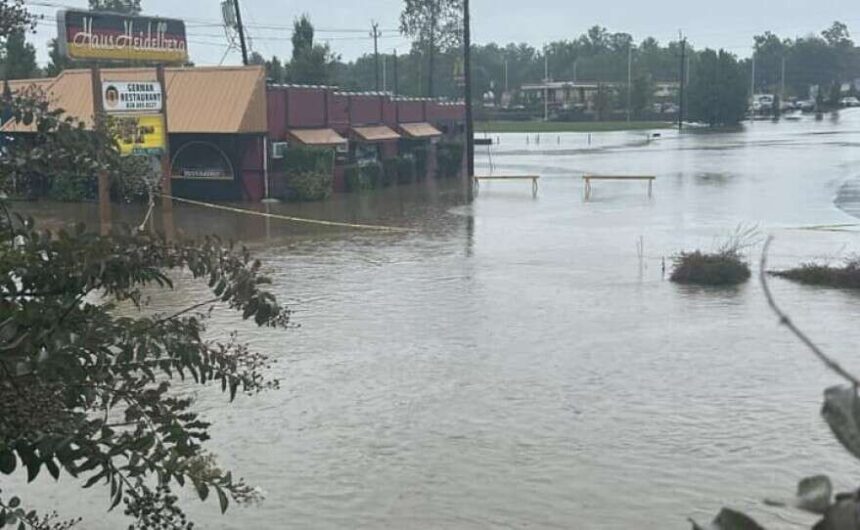“If you choose to stay … you are going to die,” said the mayor of Tampa, Florida, two days before Hurricane Milton was predicted to make landfall—less than two weeks after Hurricane Helene wrought biblical destruction from the coasts to the mountain tops. If ever there was a time to talk about the consequences of Earth’s heating, it’s now—but not in the usual terms.
Every election since James Carville said, “It’s the economy, stupid,” it’s been the economy.
By any measure, Helene was one of the most expensive hurricanes in US history. Although still preliminary, Hurricane Milton will not be far behind. The two storms have affected “more than 200 counties encompassing 31 million people in six states.
The coffers of the two primary federal disaster response groups—FEMA (the Federal Emergency Management Administration) and SBA (the Small Business Administration)—are unlikely able to cover their relief responsibilities without much larger appropriations. The politicization of federal disaster relief has made cooperation challenging even when the need was apparent and time of the essence.
A preliminary damage estimate by AccuWeather is that Hurricane Helene has resulted in damages of between $225 to $250 billion. The number is considerably higher than the initial estimates of others. It is also higher than estimates for previous hurricane costs. More shocking still is that insurance companies will pay out only $6.4 billion to policyholders, according to AccuWeather forecasts.
The AccuWeather number is higher than most others because it better reflects reality. Included in the organization’s calculations are:
· The cost of rebuilding homes, businesses, roads, and infrastructure;
· The loss of wages and economic output during the years-long rebuild;
· The loss of life;
· The cost of healthcare for storm survivors and first responders;
· The cost of extended power outages;
· The cost of major business and travel disruptions; and,
· The long-term loss to tourism, technology, renewable energy, and other industries.
AccuWeather estimates that Hurricane Milton will be responsible losses of between $160 and $180 billion. According to the organization’s Executive Chairman, Joel N. Myers, the storms together will result in losses equal to 2 percent of the nation’s GDP.
Consider, too, that the costs of weather-related disasters are hardly one-and-done. Many people who thought living in the mountains of North Carolina would protect them from a storm in the Gulf of Mexico or the Atlantic wouldn’t harm them are now afraid of staying in the area—much like those along the coast who are now migrating out of low-lying areas.
Many who saw loved ones lost to the rushing waters or power and bridge outages because they couldn’t get needed medications or lacked the electricity to run dialysis machines will require years of counseling. It’s also predicted that the disaster areas will become ground zero for COVID and flu outbreaks.
There will be a lowering of real estate values in many impacted areas. There’s the widespread ecological damage to factor. Tens of thousands of trees were downed by the winds and rains, leading to lost habitats and more erosion until new trees can do the job of the old ones. Lower real estate values mean lower tax revenues.
The cost of home insurance—even in areas outside disaster alleys—rises as damages intensify and accumulate from one storm and forest fire to another. Since 2020, the average premium has increased by more than 30 percent. Where weather risks are higher, so are the rates. In a growing number of locales, it’s no longer possible even to get home insurance. Lenders take a dim view of uninsured properties.
When private insurance is no longer available, governments will be called upon to become the insurer of last resort. In which case, taxpayers will bear the brunt. It’s not just the cost of insurance. It is also about diminishing the amount of land on which to build. Private insurers won’t keep paying to reconstruct houses or factories in high-risk areas. What were plains of hundred-and-thousand-year floods are now land inundated in one and two-year averages.
Eleanor Mueller reports the National Flood Insurance Program will “likely exhaust the program’s nearly $5 billion in funds and force it to tap $9.9 billion in Treasury borrowing authority.” Hurricane Milton’s damages may require the Program to seek higher borrowing caps. What’s certain is that all taxpayer will be on the hook for a decade or more—just to cover disasters to-date.
The consequences of Earth’s warming are not simply the damages caused by winds, rains, and rising and warming oceans. It’s also about droughts and the rising cost of food production, the competition between cities and farms for dwindling water supplies, forest fires, and the movement northwards of insect-borne diseases that negatively impact the health and welfare of human, animal, and vegetative populations.
The message here is simple: The environment is the economy, stupid.
A problematic message is best paired with positive—and realistic—solutions. There are substantial connections to be made between what makes sense scientifically and what makes dollars and sense. Climate change deniers have shown themselves unwilling to accept the word of most of the world’s scientists. Perhaps the word of insurance and investment brokers will be better tolerated.
There are solid bi-partisan arguments for building back better after weather-related catastrophes. The Infrastructure and Jobs Act was the one bi-partisan piece of climate-related legislation passed since Trump left office. It’s the type of legislation that needs to be expanded to make communities—from the coasts to the mountain tops—more resilient and not to repeat the mistakes of the past.
Even if Helene and Milton and hurricanes, forest fires, and droughts of the past haven’t cost all Americans—the next ones will. The clean energy and environmental communities need to make economics the dominant theme of their arguments.
Image of Hendersonville, NC courtesy of River Gaydish and Blue Ridge Public Radio




